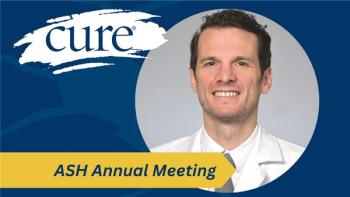
- Hematology Special Issue 2018
- Volume 1
- Issue 1
CAR-T Cell Therapy: What We Never Dreamed Of
Never in their wildest dreams dreams would immunologists from the last generation have imagined chimeric antigen receptor (CAR)-T cell therapy coming to light. The very notion of genetically engineering a T cell to recognize a tumor antigen would have been viewed almost as a pipe dream.
NEVER IN THEIR WILDEST dreams would immunologists from the last generation have imagined chimeric antigen receptor (CAR)-T cell therapy coming to light. The very notion of genetically engineering a T cell to recognize a tumor antigen would have been viewed almost as a pipe dream.
But, in 2018, this is an exciting, new cancer treatment reality that brings much hope to patients who may have felt their options had ran out. With two Food and Drug Administration approvals for CAR-T cell therapy at the end of 2017, the way in which certain pediatric and adult patients with relapsed or refractory blood cancers are treated has changed. Moreover, the cancer-fighting T cells stay around and multiply if they encounter wayward and recurrent tumor cells over time. Although CAR-T cell therapy shows great promise, it also comes with concerns.
First, it requires new technology in gene splicing, which involves cutting the DNA of a patient’s T cell and inserting a gene. It is crucial to make sure that the gene is not accidentally inserted in the wrong place and, in turn, induces a malignant transformation, something that set back the field of oncology in the past with gene transfer studies.
Then there are the side effects associated with CAR-T cells. The most serious is cytokine release syndrome — a “cytokine storm” — that can be life-threatening. Signs of this include fever, nausea, headache and rash. Other serious side effects range from changes in the brain that cause confusion or seizures to low blood cell counts. And although these side effects can be managed, will the future hold better ways to monitor and treat them? It’s also key to note that researchers are still studying the long-term effects.
Another drawback is that CAR-T cell therapy is the new poster child for runaway drug costs. Kymriah (tisagenlecleucel), the pediatric regimen, runs $475,000, and Yescarta (axicabtagene ciloleucel), approved for adults, is priced at $373,000.
Will society be able to cover the bill if this therapy is expanded into more common solid tumors? There is some hope that, rather than using the patients’ T cells and the laborious process of modifying them, off-the-shelf CAR-T cells not derived from the host will succeed the current generation. Only time will tell. For now, let’s revel in the revolutionary idea that was brought to life. A big success often generates a string of follow-up innovations that make it more feasible and accessible to all.
DEBU TRIPATHY, M.D.Editor-in-ChiefProfessor of MedicineChair, Department of Breast Medical OncologyThe University of Texas MD Anderson Cancer Center
Articles in this issue
almost 8 years ago
For Patients, Social Media Provides Perks and Perilsalmost 8 years ago
Better Outcomes in High-Risk Multiple Myelomaalmost 8 years ago
After 40 Years, Acute Myeloid Leukemia Gets 4 New Treatmentsalmost 8 years ago
The Future of Frontline Treatment in Hodgkin Lymphomaalmost 8 years ago
Lab of Plenty: New Drugs Bring Hope for AML Treatmentalmost 8 years ago
Building an Army to Fight Blood Cancer



